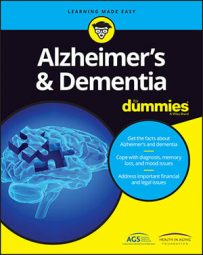- The cells can be killed off or rendered largely inactive because they receive insufficient oxygen in the bloodstream, as in vascular dementia.
- Protein deposits, such as plaques and tangles in Alzheimer's disease (AD) and Lewy bodies in Lewy body dementia, form within and mess up the internal workings of the cells.
Not only is the type of damage important in generating symptoms in the different dementias, but also where this damage occurs in the brain is also crucial in bringing about the changes observed in people with dementia. Each type of dementia has specific features, as well as more generalizable symptoms:
- Frontotemporal dementia: The changes are mainly in the two frontotemporal lobes, which are involved in both higher intellectual functions and memory processes. This damage then leads to the typical symptoms of dementia — from difficulty with planning and motivation to changes in personality and behavior.
- Alzheimer's disease: The main area affected is the hippocampus, which is involved in converting short-term memories into long-term memories, hence the initial classic symptom whereby the person has difficulty remembering what's just happened. Memories already stored long term can, however, sometimes still be recalled.
- Lewy body disease: The damage is largely inflicted throughout the cortex, where Lewy bodies can form in all the different lobes. Lewy bodies also crop up in the brain stem. Because the cortex is involved in both sensory and motor functions, people with Lewy body disease can develop hallucinations and difficulties with movement, leading to its particular cluster of symptoms.
- Vascular dementia: The areas that can be damaged are even more widespread still, given that blockages to blood supply (strokes) or reductions in blood flow can happen pretty much anywhere. Thus if the hippocampus is damaged, memory is affected. If the frontal lobes are involved, issues with planning and personality develop. If the motor control center in the parietal lobe is damaged, then movement can be impaired, resulting in paralysis.
Because the brain is so complex, the symptoms of the different types of dementia aren't quite as well demarcated as this. In the brain, many different areas can be involved in certain processes, especially memory. Damage to connecting cells between lobes can result in difficulties of a mixed picture, not just the loss of a specific cognitive function.

